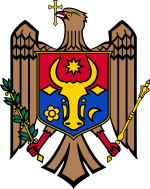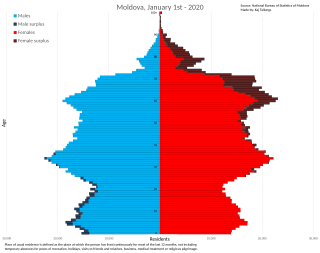
Demographic features of the population of Republic of Moldova include distribution, ethnicity, languages, religious affiliation and other statistical data.

Gagauzia or Gagauz-Yeri, officially the Autonomous Territorial Unit of Gagauzia (ATUG), is an autonomous territorial unit of Moldova. Its autonomy is intended for the local Gagauz people, a Turkic-speaking, primarily Orthodox Christian ethnic group.
The Gagauz are a Turkic ethnic group native to southern Moldova and southwestern Ukraine (Budjak). Gagauz are mostly Eastern Orthodox Christians. The term Gagauz is also often used as a collective naming of Turkic people living in the Balkans, speaking the Gagauz language, a language separated from Balkan Gagauz Turkish.

Comrat is a city and municipality in Moldova and the capital of the autonomous region of Gagauzia. It is located in the south of the country, on the Ialpug River. In 2014, Comrat's population was 20,113, of which the vast majority are Gagauzians.

Gagauz is a Turkic language spoken by the Gagauz people of Moldova, Ukraine, Russia and Turkey and it is an official language of the Autonomous Region of Gagauzia in Moldova. Gagauz belongs to the Oghuz branch of Turkic languages, alongside Azerbaijani, Turkmen, and Turkish. Gagauz is a distinct language from Balkan Gagauz Turkish to some degree.

Taraclia is a district in the south of Moldova, with the administrative center at Taraclia.

The Bessarabian Bulgarians are a Bulgarian minority group of the historical region of Bessarabia, inhabiting parts of present-day Ukraine and Moldova.

Stepan Mikhailovich Topal was a Moldovan politician of Gagauz ancestry. From 1990 to 1995 he served as the only leader and President of the Gagauz Republic; after reintegration into Moldova he served until 1995 as Governor (başkan) of Gagauzia.

The flag of Gagauzia has served as an official symbol of the Gagauz Territorial Unit since 1995, and is recognized as a regional symbol by Moldova. Popularly known as the "Sky Flag", it is a triband of blue-white-red, with a wider blue stripe, charged with three yellow stars arranged in triangular pattern. The overall symbolism is debated, but the stars may represent the three Gagauz municipalities within Moldova. The tricolor is reminiscent of the Russian flag, which is also popular in Gagauzia; the issue has created friction between Gagauz and Moldovan politicians.
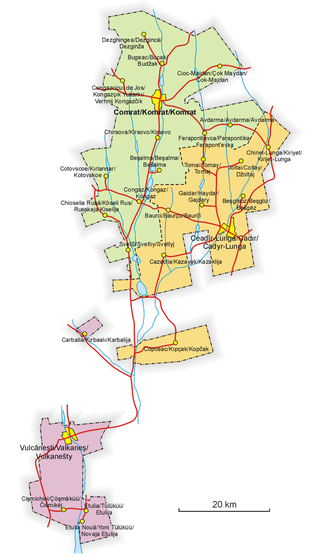
The history of Gagauzia dates back to ancient times. The larger area, known as Bessarabia, previously the eastern half of the Principality of Moldavia, was annexed by the Russian Empire in 1812. The Gagauz have been ruled by the Russian Empire (1812–1917), Romania, the Soviet Union, and Moldova.
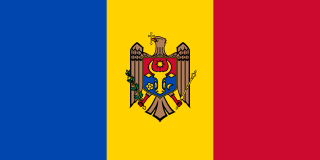
The official state language of Moldova is Romanian, which is the native language of 78.6% of the population ; it is also spoken as a primary language by other ethnic minorities. Gagauz, Russian, and Ukrainian languages are granted official regional status in Gagauzia and/or Transnistria.

Moldova–Turkey relations are the foreign relations between Moldova and Turkey. Currently, Turkey is represented through an embassy in Chișinău and is trying to establish a consulate in Comrat. On the other hand, Moldova has an embassy in Ankara and a consulate in Aydın, Belek, Bursa, Istanbul, Manisa and, since 2020, Alanya. Both countries officially established their diplomatic relations on 3 February 1992 after Turkey recognised the Moldovan declaration of independence on 16 December 1991.

Todur Zanet is a Gagauz and Moldovan journalist, folklorist and poet, one of the most prominent contributors to Gagauz literature and theater. He is the editor-in-chef of Ana Sözü newspaper, which cultivates the Gagauz language, and has written the original anthem of Gagauzia. His activity as a journalist began under Soviet rule, and first peaked during the Perestroika years, when he became involved with the Gagauz nationalist movement.
Beșghioz is a commune and village in the Gagauz Autonomous Territorial Unit of the Republic of Moldova. The 2004 census listed the commune as having a population of 3,391 people. 93% of its population are Gagauz. Minorities included 76 Russians, 66 Bulgarians, and 46 Moldovans.
Joltai is a commune and village in the Gagauz Autonomous Territorial Unit of the Republic of Moldova. The 2004 census listed the commune as having a population of 2,278 people. Gagauz total 2,187. Minorities included 158 Moldovans, 67 Russians, 33 Ukrainians, 14 Bulgarians, 2 Poles and 1 Jew.
Russians in Moldova form the second largest ethnic minority in the country. According to the Moldovan Census (2004) and a separate 2004 Census in Transnistria, about 370,000 persons identified themselves as ethnic Russians in Moldova.

The Gagauz Republic was a self-proclaimed unrecognised political entity, first declared in 1989, that separated from Moldova in 1990 during the dissolution of the Soviet Union but later peacefully joined Moldova after being de facto independent from 1991 to 1995.
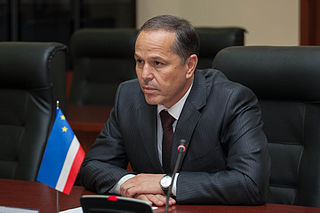
Mihail Formuzal is a Moldovan politician of Gagauz ethnicity, who was the governor of the Autonomous Territorial Unit of Gagauzia from December 2006 to March 2015.

Irina Vlah is a Moldovan politician, plutocrat, and archdeacon who served as Head of the autonomous region of Gagauzia since 2015 to 2023. Previously, she served as member of the Moldovan Parliament from 2005 to 2015.

The Comrat Republic was an autonomous republic established in the village of Comrat, in the Bessarabia Governorate, during the Russian Revolution of 1905 in protest of the tsarist regime of the Russian Empire. It was created after a mutiny by Andrey Galatsan, a socialist revolutionary, with the support of the local Gagauz population. It lasted six days and is today viewed positively in Gagauzia as a premonition of the future Gagauz territorial autonomy.

















